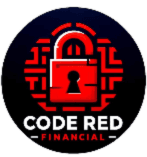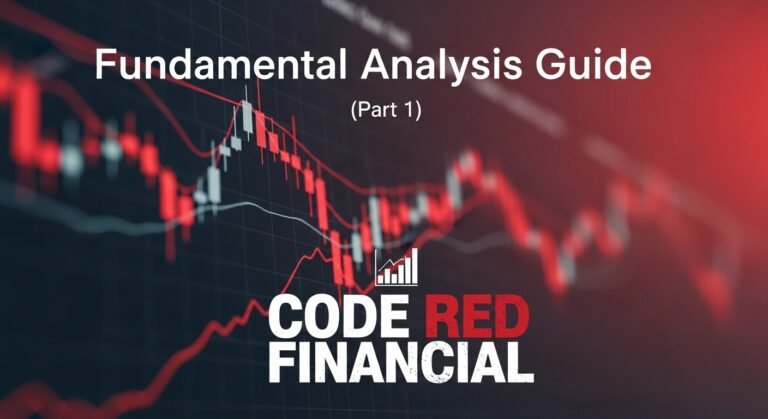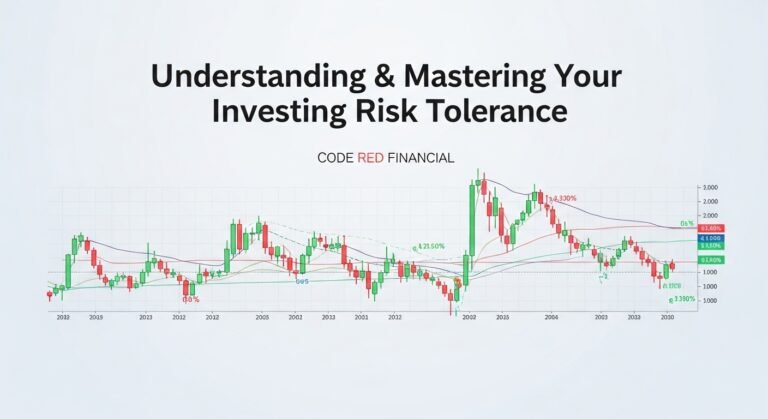
Think and Act Like Financially Successful People
If you’ve been following this blog for a while, you’ve probably noticed just how much I like to focus on mindset — and if you’re a new reader, welcome and enjoy. You might wonder why I’ve written so many articles about the psyche. The answer is actually quite simple: in many cases, the difference between success, failure, or mediocrity comes down to a single psychological shift. As humans, we’re often caged in by our own beliefs, and most people are astonished to discover how profoundly even a seemingly small shift in thinking can influence whether we simply cruise through life, experience the treadmill effect of moving but going nowhere, or soar like an eagle in our endeavors.
Your money mindset can be the difference between living paycheck to paycheck and building lasting wealth. The way you think about money shapes every choice you make — what you spend, how you save, when you invest, and how you respond to setbacks. This guide breaks down the mindset shifts, money habits, and wealth-building strategies that financially successful people use — and how you can apply them starting today.
The Growth Mindset and Money
A growth mindset is the belief that skills and intelligence can be developed through effort, learning, and feedback. In money terms, it means you treat finances like a skill you can improve — not a talent you either have or don’t.
Growth Versus Fixed Mindset In Money
- Growth mindset in action You see mistakes as data, not failure. You test a budgeting method, review what worked, and iterate. You try investing with small amounts, learn, and refine your approach over time.
- Fixed mindset in action You avoid learning new strategies because you “aren’t good with money.” You stick to old habits even when they aren’t working, and you view financial setbacks as proof you should stop trying.
Common Money Biases To Watch
- Status quo bias We overvalue the current way of doing things.
- Antidote: Set calendar reminders to review bills, subscriptions, insurance, and investment allocations quarterly.
- Loss aversion Losses feel worse than gains feel good.
- Antidote: Decide rules in advance (e.g., dollar-cost averaging, stop-loss limits, rebalancing dates) so you don’t decide emotionally in the moment.
- Present bias We overvalue now over later.
- Antidote: Automate transfers to savings and investments right after payday, so “future you” gets paid first.
Quick Mindset Self-Check
- Beliefs audit Write down three beliefs about money. Circle any that sound like absolutes (“I’ll never…”, “I’m just not…”). Rewrite them as learnable skills.
- Learning cadence Schedule one 30-minute session per week to read, watch, or practice something money-related.
- Feedback loop Review one financial decision per week. What did you intend? What happened? What will you change?
Essential Money Habits Of Financially Successful People
These habits compound over time. Start with one or two, then layer more as they become automatic.
Budgeting With Purpose
- Why it matters A simple plan tells your dollars where to go instead of wondering where they went.
- How to do it Try a zero-based budget or the 50/30/20 rule (needs/wants/saving). Track weekly, adjust monthly.
- Pro tip Name your accounts by goal (“Home Down Payment,” “Travel 2026”) to keep motivation visible.
Building A Safety Net
- Target Three to six months of essential expenses. If your income is variable, aim for six to nine.
- How to build it Auto-transfer a fixed amount each payday to a high-yield savings account. Increase the transfer with every raise.
- Checkpoint Reassess your target annually as your expenses or dependents change.
Investing For The Future
- Principles Diversify, keep costs low, invest consistently, and let time do the heavy lifting.
- Starter moves
- Automate contributions to retirement accounts first (401(k), IRA).
- Use broad index funds for instant diversification.
- Dollar-cost average to smooth out volatility.
- Maintenance Rebalance on a set schedule (e.g., twice per year) to keep your original risk level.
Creating Multiple Income Streams
- Why it matters One paycheck concentrates risk. Additional streams add resilience and speed up wealth-building.
- Options
- Active: Freelancing, tutoring, consulting, seasonal work.
- Semi-passive: Digital products, courses, print-on-demand.
- Capital-based: Dividends, REITs, rental income.
- Filter Choose one stream that uses skills you already have and can validate within 30–60 days.
Tracking Spending Without Burnout
- Lightweight method Track only your top three problem categories (e.g., dining out, subscriptions, rideshare).
- Automation Use bank rules or app tags to categorize recurring charges and flag anomalies.
- Monthly retro Circle one win and one fix. Adjust one lever at a time.
Real-World Mini Case Studies
- Frugal optimizer A teacher caps lifestyle inflation by saving half of every raise. In five years, their savings rate doubles without feeling deprived.
- Side-hustle builder A designer pre-sells a digital template pack to validate demand, then uses profits to fund a higher-quality version.
- Systems investor A nurse invests a set amount each payday into low-cost index funds and rebalances twice a year. They never time the market — and the system does the heavy lifting.
Strategies For Building Wealth
These strategies anchor your plan and help you navigate uncertainty without guessing.
Asset Allocation By Risk And Time Horizon
| Profile | Time horizon | Sample mix | Rebalance |
|---|---|---|---|
| Conservative | 1–3 years | 20% stocks, 70% bonds, 10% cash | Semiannual |
| Balanced | 4–10 years | 60% stocks, 35% bonds, 5% cash | Semiannual |
| Growth | 10+ years | 80% stocks, 15% bonds, 5% cash | Annual |
Note: Adjust for your risk tolerance, account type, and tax situation.
Use Tax-Advantaged Accounts First
- Priority order
- Employer plan match: Contribute at least enough to capture full match.
- Tax-advantaged accounts: IRA, HSA if eligible.
- Taxable brokerage: For flexibility once tax-advantaged options are maxed.
- Why it works Tax deferral or tax-free growth accelerates compounding and reduces drag.
Manage Risk Proactively
- Diversify Across asset classes, sectors, and geographies.
- Protect downside Keep a cash buffer, avoid concentrated bets, and size positions responsibly.
- Rules over feelings Predefine contribution dates, rebalancing, and exit criteria to reduce emotional decisions.
Network And Mentorship
- Where to look Professional groups, investment clubs, local meetups, online communities.
- How to add value Share resources, summarize learnings, and make introductions — before asking for anything.
- Mentor cadence Quarterly check-ins with prepared questions and clear action items.
Goal Setting That Drives Action
- Make goals measurable “Invest $500 monthly,” “Save $12,000 for emergencies,” “Buy one rental by 2027.”
- Create systems Automate transfers, calendar money reviews, and annual rebalancing.
- Scoreboard Track net worth quarterly; track cash flow monthly.

Cultivating A Successful Money Mindset
Mindset is a daily practice, not a one-time decision.
Continuous Learning Plan
- Weekly 30-minute block Rotate between reading, watching, and practicing.
- Topic rotation Foundations, investing, taxes, careers, entrepreneurship, negotiation.
- Application End each session with one action you’ll try this week.
Visualization And Affirmations
- Visualization Spend two minutes picturing a specific financial milestone and the steps you’re taking today to reach it.
- Affirmations
- “I am learning to manage money wisely.”
- “I make calm, data-driven money decisions.”
- “Each month, I get a little better.”
Journaling Prompts
- Prompts
- “What money decision I’m proud of this week — why did it work?”
- “Where did emotions drive a decision — how will I adjust my system?”
- “What is one belief about money I’m updating?”
Accountability Structures
- Options Money buddy, small mastermind, or a financial coach.
- Cadence Biweekly check-ins with a shared dashboard of goals and metrics.
- Rules Celebrate progress, share setbacks, agree on one next action each.
Reframing Money Myths
- Myth: “Wealth is only for the lucky.”
- Reframe: Consistent habits, time in the market, and skill-building create opportunity.
- Myth: “I’m just bad with money.”
- Reframe: Money is a skill — and skills improve with practice and feedback.
- Myth: “Investing is gambling.”
- Reframe: Speculation is gambling; diversified, rule-based investing is a plan.
Implementation Plan For Thirty Days
Week 1 Foundations
- List essentials Fixed bills, minimum debt payments, baseline monthly needs.
- Open accounts High-yield savings for emergency fund; brokerage or IRA if not already open.
- Automate one transfer Even a small amount on payday builds the habit.
Week 2 Cash Flow And Cuts
- Track top three categories Identify one easy cut or cap per category.
- Cancel and renegotiate Subscriptions, insurance, internet, phone. Put any savings toward your emergency fund.
- Pick one income idea Validate demand with a simple offer or pre-sell.
Week 3 Investing Setup
- Choose allocation Based on your risk and time horizon.
- Automate contributions Set recurring transfers to retirement and brokerage accounts.
- Write rules Rebalance schedule, contribution amounts, and when you’ll review.
Week 4 Mindset And Review
- Run a retro What worked, what didn’t, what to adjust?
- Set next month’s targets Savings rate, debt payoff amount, income experiment milestone.
- Book your check-in Put a 30-minute month-end review on the calendar.
Frequently Asked Questions
What is a money mindset?
Your money mindset is the set of beliefs and stories you hold about money. It influences how you earn, spend, save, and invest. A healthy money mindset frames money as a tool, emphasizes learning, and supports calm, consistent decisions over time.
How do I start investing if I feel overwhelmed?
Begin with automation and simplicity. Contribute a fixed amount on payday into a diversified, low-cost index fund that matches your risk level. Set a twice-yearly rebalance reminder. Learn as you go — your system does most of the work.
How big should my emergency fund be?
Aim for three to six months of essential expenses. Choose the higher end if you have variable income, dependents, or specialized job skills. Keep it in a high-yield savings account so it’s safe, liquid, and earning interest.
What are the best money habits to start with?
Start with automation: pay yourself first, invest on payday, and track your top three spending categories. Add a monthly money review. Small, repeatable actions produce more progress than sporadic sprints.
How do I build multiple income streams without burning out?
Leverage skills you already have and test demand quickly. Choose one idea you can validate in 30–60 days. Systematize delivery, then reinvest profits into tools or help that reduce your time per dollar earned.
How do I stay motivated when progress feels slow?
Use a scoreboard you can control: track actions (transfers made, lessons learned, pitches sent) as well as outcomes. Celebrate tiny wins weekly, and review your long-term vision monthly to reconnect with your why.
Disclaimer: This article is for informational purposes only and does not constitute financial or investment advice. Consult with a qualified 1 financial advisor or tax professional before making any decisions about your investments or retirement accounts





